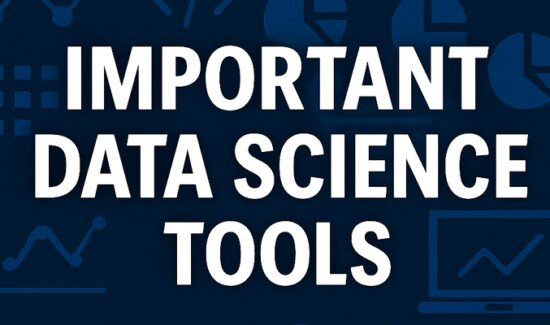Semantic Intelligence: The Missing Layer in Scalable AI and BI Systems


Kyvos Insights’ Dharmendra Chouhan offers commentary on semantic intelligence and how it is the missing layer in scalable AI and BI systems. This article originally appeared in Insight Jam, an enterprise IT community that enables human conversation on AI.
Data-driven decisions and real-time analysis offer a competitive advantage in today’s market that businesses cannot ignore. Organizations routinely analyze billions of rows of data to optimize operations and personalize customer experiences. However, due to growing data volumes, businesses may not get responses from BI tools in seconds, as needed for data-led insights.
Traditional approaches that rely on brute-force computation are reaching their limits. They struggle not just with performance and cost, but also with governance and consistency. Yes, adding more powerful hardware is one approach, but an expensive one. Semantic intelligence offers a far more effective solution.
Semantic intelligence is a transformative layer that unlocks sub-second querying at scale, converting raw data into actionable insights almost instantaneously. This article explores how semantic models, intelligent aggregations and contextual awareness deliver speed, accuracy and agility across data-heavy industries.
The Limitations of Brute Force Compute
When traditional analytics infrastructure hits performance bottlenecks, the most common response has been to throw more computing resources at them—more nodes, faster processors and larger memory pools. This works for a while, but fails to scale as costs grow exponentially, while performance gains become rather marginal.
To add to the problem, modern businesses have data housed across various systems and departments. Without shared context and clear relationships, these fragmented datasets make it hard for BI tools to query directly from a central source. This can lead to not only inconsistent metrics and slow responses but also results in insights that are often unreliable or misinterpreted.
In the absence of effective data governance, data can be recorded and interpreted differently by different verticals of an organization. What product teams may refer to as “users” are the same underlying customers that sales teams call “clients.” This disparate way of recording and interpreting data can lead to conflicting reports and ultimately, decision paralysis.
Everything combined, it’s safe to say that brute force computation alone cannot keep up with the growing data volume and complexity. Enter, semantic intelligence.
The Role of Semantic Intelligence in Improving Speed and Trust
Semantic models offer a different approach. Unlike traditional data models, a semantic model acts as a unified business layer, abstracting the underlying schema and shielding users from technical complexities.
It sits between data warehouses and BI tools to create a shared vocabulary of business entities and metrics that stretches across teams and tools. These models involve pre-computation and intelligent processing, leading to sub-second responses at scale.
Here are the key features of a semantic model that contribute to faster and accurate analytics:
-
Smart Aggregation: The semantic layer pre-calculates and stores frequently used queries and metrics. This allows the system to retrieve data from pre-computed aggregates instead of processing billions of rows every time a user inputs a query, thus drastically reducing execution time. The layer also has the intelligence to refresh and add aggregates based on usage patterns.
-
Contextual Awareness: It adds a contextual layer within a database explaining relationships and hierarchies, often specific to the business domain. Each user query is interpreted in the context of the business, resulting in accurate query responses. With such precision, a semantic layer ensures that the engine only processes necessary data, in turn, reducing the power and time taken.
-
Governed Metrics: Lastly, the most important contribution of semantic models is the establishment of a single source of truth and standardizing KPI definitions. By defining metrics once within the semantic layer, all reports and analysis—regardless of tools or department—become consistent and reliable. Robust governance is further bolstered by the advanced security provided by semantic layers, with row- and column-level access control, column masking and more.
These features, combined together, provide a single source of truth across the organization and help generate responses in sub-seconds which previously would’ve taken minutes or even hours!
Real-World Applications of Semantic Intelligence
Semantic intelligence impacts the most in situations where immediate insights are not just good-to-have but are critical to smooth operations.
In the world of finance, sub-second response time enable advanced fraud detection tools to detect anomalies and suspicious transactions, allowing businesses to intervene proactively and minimize financial losses. Similarly, when it comes to volatile environments, analyzing markets and risks at speed helps financial institutions make swift, necessary decisions.
The telecom sector also has a huge volume of data which grows daily. The data can be sourced from different systems and creating a semantic layer enables business to give this data a common definition. It needs to be processed quickly and should be made available for analytics. Instantly analyzing network performance data allows operators to identify bottlenecks, optimize resource allocation, and enhance service quality proactively. Further, the semantic layer also helps operators analyze a customer’s behavioral pattern to determine the best moment for delivering personalized offers that maximize conversion rates.
In retail, semantic intelligence helps dynamic pricing engines adapt prices based on real-time demand, inventory levels and competitor pricing. Similar to the telecom industry, it also helps the retail sector to deliver personalized suggestions, pricing and product bundles to customers instantly based on their live interactions with retail websites.
Across industries, the implications of semantic models are clear: faster, accurate insights that lead to better decisions and greater efficiency that yield stronger competitive advantage.
Semantic Intelligence: The Glue Between Data Complexity and Real-Time Decisions
To sum up, semantic intelligence represents the missing layer in today’s AI and BI stacks. It acts as the bridge between an organization’s need for fast insights and its expanding, often siloed, dataset.
With smart aggregation it allows BI tools to generate lightning-fast insights. It processes data through a consistent “lens” helping create a single source of truth for every department. Enhanced contextual awareness allows non-technical users to ask sophisticated questions without worrying about underlying schemas or query languages.
With the growing volume and importance of data across most industries, businesses must embrace this technology to move beyond the limitations of brute-force computation and achieve real time insights at scale without compromising trust or governance.































